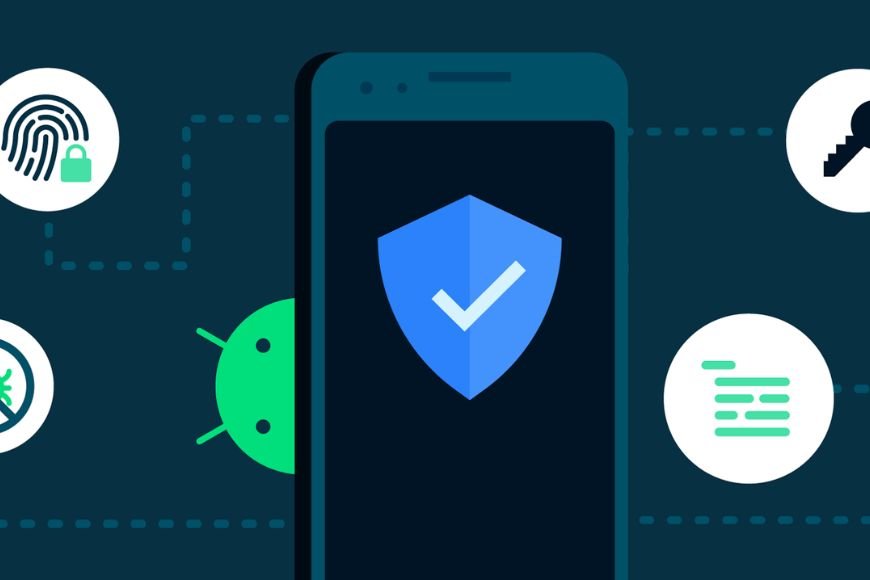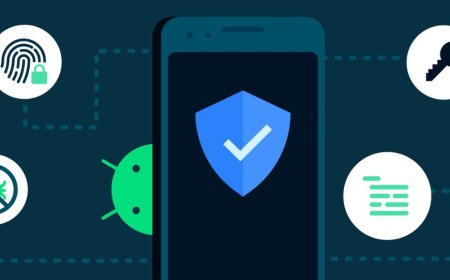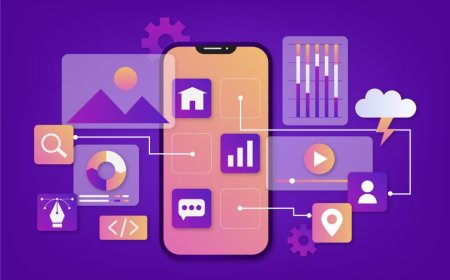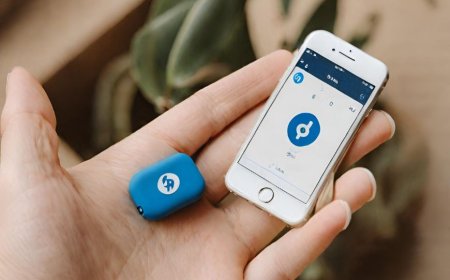Android Gets Secure: Theft & Threat Protection
A security update for Android! Safeguard screens, stop thievery, and stop rogue programs. Find out more & safeguard your phone!

Our smartphones have become an essential part of our lives, carrying everything from personal photos and messages to banking information and work documents. This treasure trove of data makes them a prime target for thieves and online threats. Luckily, the latest Android update brings exciting new features designed to combat these risks. From improved access to Find My Device to automatic theft detection and real-time app threat protection, Android is getting a major security boost. Let's dive deeper and explore how these features can keep your data safe and your phone secure.
Protection against Theft and Security
Android's new features go beyond simply reacting to theft. They create a multi-layered defense system to deter thieves and make it harder for them to access your data. Here's how:
- Improved Factory Reset Protection: Traditionally, a thief could wipe your phone clean through a factory reset, erasing all your data and bypassing security measures. The good news is, Android has made this significantly harder. Even after a factory reset, the phone will remain locked to your Google account. This means the thief would need your Google account credentials to use the phone, making it a much less attractive target.
- PIN/Password or Biometrics for Security Features: Sometimes, even honest mistakes can lead to security vulnerabilities. Previously, someone could accidentally disable the "Find My Device" feature, which helps locate lost or stolen phones. Now, Android requires a PIN, password, or biometric authentication (fingerprint, face unlock) to disable this crucial feature and others like changing the screen timeout. This extra step prevents accidental deactivation and ensures these security tools remain active.
- Biometrics for Critical Settings in Untrusted Locations: Let's say your phone gets stolen, but the thief somehow manages to guess your PIN or password. Even then, critical settings are now protected with an additional layer of security. If the phone detects it's in a location you haven't designated as trusted, attempting to change your PIN, disable Find My Device, or access other sensitive settings will require biometric authentication (fingerprint or face unlock). This makes it much harder for a thief to gain full control of your phone, even if they know your basic login credentials.
Offline and Theft Detection Lock
Imagine this: you're walking down the street, phone in hand, when someone snatches it from you and bolts. In the blink of an eye, your phone is gone. Thankfully, Android's new Theft Detection Lock feature, powered by AI, can react in a flash to such situations.
Here's how it works: Theft Detection Lock utilizes on-device machine learning to analyze sudden changes in sensor data that might indicate a snatching attempt. This could include a rapid increase in acceleration (like the phone being yanked from your hand) or a change in ambient light (suggesting the phone is no longer in your pocket). If the system detects a likely snatching scenario, it will automatically lock the screen immediately. This instant lockdown serves two purposes:
-
Thwarting Immediate Access: By locking the screen instantly, Theft Detection Lock makes it much harder for the thief to access your phone or disable security features. Those precious seconds can be crucial in deterring them and giving you time to react.
-
Maintaining Data Protection: Even if the thief manages to keep the phone, the screen lock and your existing security measures (PIN, password, fingerprint) will still prevent them from accessing your data. This significantly increases the chances of keeping your personal information safe.
While Theft Detection Lock can't guarantee the return of your stolen phone, it provides a powerful first line of defense in snatching scenarios, giving you a fighting chance to secure your device and protect your data.
Access Find My Device with Phone Number
Misplaced your phone? Don't panic! Android now makes it easier than ever to regain control of a lost device with the improved "Find My Device" feature. Gone are the days of needing to remember a complex login just to locate your phone. Here's the exciting update:
-
Remote Lock with Phone Number: If you've misplaced your phone, simply access the "Find My Device" website (or app) from another device and enter your phone number associated with the lost device. You'll then be prompted to answer a pre-set security challenge (something only you know, like a secret question). Once verified, you'll gain remote access to your phone's "Find My Device" functions.
-
Benefits of Regaining Control: With remote access, you have several options to secure your lost phone:
-
Play Sound: Make your phone ring at full volume, even if it's on silent, potentially helping you locate it nearby.
-
Secure the Device: Remotely lock your phone with a strong PIN, password, or pattern, preventing unauthorized access to your data.
-
Erase Data (Last Resort): If you believe your phone is irretrievably lost or stolen, you can initiate a remote data wipe, ensuring your personal information remains secure.
The ability to remotely access "Find My Device" with just your phone number is a significant improvement. It removes a potential hurdle in a stressful situation and allows you to react quickly to secure your device or protect your data.
Live Threat Detection for Apps
Traditionally, app security relied on scanning apps before installation. While effective, this approach couldn't catch malicious behavior that emerged after the app was downloaded. Here's where Google Play Protect steps up its game with the introduction of live threat detection:
-
Evolving Security with Live Monitoring: Google Play Protect's new live threat detection uses on-device machine learning to continuously monitor app behavior after installation. This allows it to identify suspicious activities that might not be apparent during the initial scan.
-
AI on the Lookout: The on-device AI models analyze various signals related to how apps interact with your device. This includes how they access sensitive permissions (like location or microphone access) and how they interact with other apps and services. By analyzing these ongoing interactions, the AI can detect patterns that suggest malicious intent.
-
Actionable Insights: If the AI identifies suspicious behavior, it can take several steps. It might flag the app for further analysis by Google, warn you directly about potential risks, or even disable the app if the threat is deemed critical. This real-time protection provides an extra layer of security against hidden threats that might attempt to steal your data or harm your device.
Live threat detection with on-device AI represents a significant advancement in mobile security. It allows Google Play Protect to be more proactive in safeguarding your device from emerging threats, offering peace of mind as you explore the vast world of mobile apps.
Cellular Network Protection (Future Feature)
While not yet widely available, there's an exciting development on the horizon for Android: cellular network protection. This feature aims to address potential vulnerabilities in cellular network communication. Here's a glimpse into what it might offer:
-
Encryption Alerts: Cellular network protection might notify you if you're connected to an unencrypted network. Unencrypted networks leave your voice calls and SMS messages vulnerable to potential interception. This feature would raise awareness and allow you to take steps to secure your communication, like using encrypted messaging apps when necessary.
-
Hardware Compatibility: It's important to note that cellular network protection might require compatible hardware on your device. This means the feature might not be available on all phones immediately, but manufacturers are working alongside Android to integrate this technology in the future.
While details are still emerging, cellular network protection represents a promising step towards more comprehensive mobile security. By keeping you informed about network encryption status, this feature empowers you to make informed decisions about how you communicate on your phone.
Hidden Content in Screen Sharing
Some Android devices may offer a feature for enhanced privacy during screen sharing. This allows you to hide specific content on your screen while sharing it with others. Here's a quick explanation:
-
Privacy on Display: Imagine you're giving a presentation or demonstrating an app, but there might be personal information or sensitive details on your screen you don't want to share. With hidden content in screen sharing, you can designate specific areas to be blurred or blacked out during the sharing session.
-
Maintaining Control: This feature allows you to choose which parts of the screen to hide, providing granular control over what information is visible to the recipient. This can be particularly useful for protecting sensitive data like passwords, account numbers, or private messages that might accidentally appear during screen sharing.
It's important to note that the availability of this feature may vary depending on your specific device and Android version. However, its presence highlights the growing focus on user privacy and control within the Android ecosystem.
Conclusion
The latest Android update is a game-changer for security. Forget worrying about a factory reset wiping your data after a theft - Android is now locked to your Google account. New AI features are on the lookout too, with Theft Detection Lock automatically locking the screen during snatch attempts and Live Threat Detection constantly monitoring apps for suspicious behavior and losing your phone? No sweat! Regain control with just your phone number to remotely lock it or even erase data. And for presentations, keep prying eyes at bay with hidden content in screen sharing (available on some devices). To maximize your security, set a strong lock, update regularly, and stick to trusted app sources. With these advancements, Android is building a future where you can relax and enjoy your phone, knowing your data is safe and secure.
What's Your Reaction?












































































